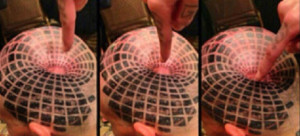Based on case reports of Dr Hitzig and Cooley from 2010, and the spirit of science we have tried to replicate the cloning claims by applying for clinical research through an institutional review board (IRB), also known as an independent ethics committee (IEC) or ethical review board (ERB), IRB.
We had two category of ACell trials:
(1) ACell to promote new hair follicle regeneration from plucked hair, thus creating two hairs from one hair as the plucked hair is assumed to grow back. This in essence is viewed by some as cloning.
At this time, at about the 3+ year mark, our patients who received ACell for hair regeneration have not reported growth and we had seen all of them at the 6th month and 12 month point in time. If you read the ACell update from ISHRS Alaska 2011 conference, it would seem the ACell cloning was only hype.
(2) ACell to promote wound healing and less scar formation. This involves ACell that is incorporated into the strip donor wound.
At this time, at about the 3+ year mark, some patients have reported less pain after the surgery and a better looking scar (those who have had more than one surgery to compare their own experiences). But the overall width (size) of the scar is not any better (smaller). In other words the scar may NOT be smaller, but they are less pink and seemed to heal faster.
In summary we have spent thousands of dollars applying for the IRB permission as well as materials cost as well as staff hours for not so stellar results. More importantly it is regrettable to those patients who have participated in hopes of unlimited hair to only receive nothing from their effort. ACell may have some place in wound healing and we still offer this option to our patients at no cost.
To be clear: ACell does not grow hair. ACell does not make the scar smaller. Acell may heal the wound better but there is no clear proof of this. This observation is merely subjective.
Tags: acell, hair replication, hair



